ANIMATION FOR TOM FOOLERY
Requirements:
- Autodesk Maya
- Weigl 3D animation converter
- Weigl Conductor
- Animator with some experience in animating in Maya
Introduction:
This document is intended to talk about the animation pipeline for the animatronic Tom Foolery designed for Give Kids the World. The document provides an idea about how the animations from Maya are converted into files recognized by servomotors and then used to translate the animations on the animatronic.
CHARACTER PROFILE FOR TOM:
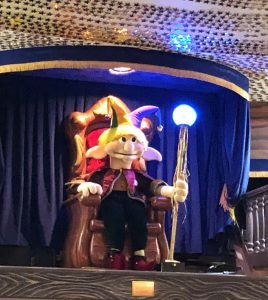
For animating Tom we need to know about Tom’s character profile which would determine his key moments and reactions to different story content.
- Tom is a court jester who likes to tell jokes and since he has graduated from the jester academy he is wishing to share his jokes and looks around towards everyone to see their reactions. Therefore Tom is constantly looking around at kids and is looking for their reactions.
- Tom is also desperate to make friends and is enthusiastic about his jokes which also is responsible for making him look around and move his scepter.
- Tom is curious to see everyone’s reactions and likes to get responses from kids therefore he tilts his head in between and also after asking questions.
- For sequences like dance party music he likes to dance to the tune by tilting his head but is also looking around at the kids performing.
- Since the scepter is magical Tom likes to move his scepter out away from him on words like happiness, wow, yeah etc. which show excitement, happiness and enthusiasm. He also moves the scepter towards himself on words like I or while asking questions.
- During interaction with Joel the Troll for welcome show Tom is looking towards the right direction which is the direction in which Joel is present. For goodnight show since Father time is also in the same direction therefore Tom is looking constantly towards Father time during Goodnight show and while singing Goodnight song.
- Since Tom sits in the balcony he bends forward to look around at the kids below and also interact with volunteers. He also likes to bend backward while dancing or while expressing emotions of shock, excitement or happiness.
ANIMATIONS IN MAYA:
For creating animations in Maya we have provided the base files with the 3D model and the rig that replicates the mechanical design. Since the rig replicates the mechanical design it allows to pre- visualize the animations that will be played on the animatronic and also get an idea about the desired speeds to be used for different functions. However the animations should look natural and should be based on the audio files.
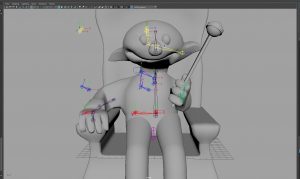
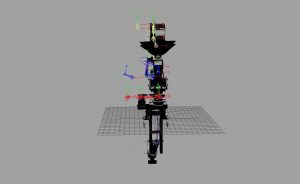
TOM has 5 different functions which are as follows:
1. TOM HEAD TURN :-
- For animating the head turn function on the 3D model for Tom use the controller TOM_HEAD_TURN_CONTROLLER (marked in the image below) with an angle range from -90 degrees to +90 degrees along the Y-axis.
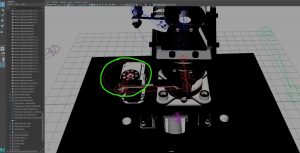
- The data from the TOM_HEAD_TURN_CONTROLLER needs to be copied to a dummy single joint that is TOM_HEAD_TURN_SERVO_MAIN (marked in the image below) which will then be used to convert the rotation data for Y-axis using 3D converter as the converter does not support joint chains with more than 3 joints.
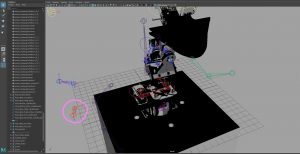
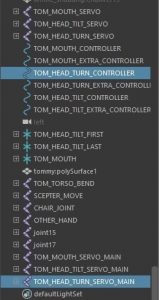
- Because of scripting the when the joint TOM_HEAD_TURN_SERVO_MAIN rotates at 90 degrees or -90 degrees then the TOM_HEAD_TURN_PIVOT rotates at 40 degrees which replicates the mechanism from the mechanical design.
2. TOM HEAD TILT:-
- For animating the head tilt function on the 3D model for Tom use the controller TOM_HEAD_TILT_CONTROLLER( marked in the image below) with an angle range from -80 degrees to +80 degrees along the Z-axis.
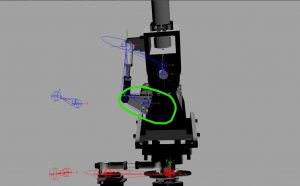
- The data from the TOM_HEAD_TILT_CONTROLLER needs to be copied to a dummy single joint that is TOM_HEAD_TILT_SERVO_MAIN (marked in the image below) which will then be used to convert the rotation data for Z-axis using 3D converter as the converter does not support joint chains with more than 3 joints.
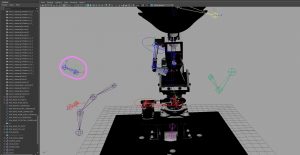
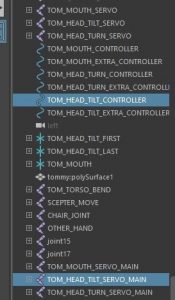
- Because of scripting the when the joint TOM_HEAD_TILT_SERVO_MAIN rotates at 80 degrees or -80 degrees then the TOM_HEAD_TILT_PIVOT rotates at 40 degrees which replicates the mechanism from the mechanical design.
3. TOM MOUTH FUNCTION:-
- For animating the mouth function for the 3D model of Tom use the TOM_MOUTH_CONTROLLER (marked in the image below) for a range from 0 degree to -40 degrees in the X-axis.
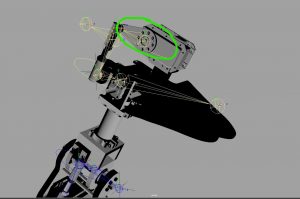
- The mouth needs to be animated based on the audio so that Tom is lip syncing with the audio. Maya supports only AIFF format for audio files, therefore any audio files need to be converted to AIFF format before using in Maya.
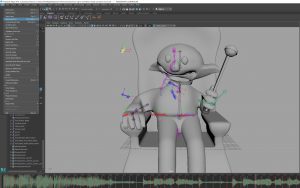
- The data for the TOM_MOUTH_CONTROLLER then needs to be transferred to the TOM_MOUTH_MAIN_SERVO_JOINT where the angle needs to be changed to +40 degrees so that we can use this joint for the 3D converter to convert the animations as the converter does not support joint chains with more than 3 joints.
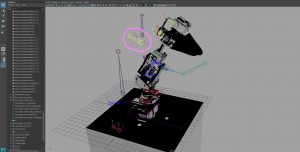
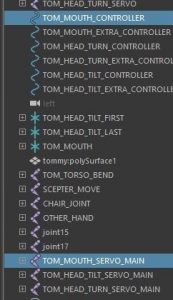
4. TOM TORSO BEND:-
- For animating the torso bend function for the 3D model of Tom use the joint TOM_TORSO_BEND( marked in the image below) for a range from -55 degrees to -85 degrees in the Y-axis.
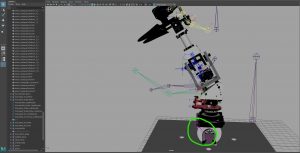
- Since the joint is a single chain joint it can be directly used with the 3D converter.
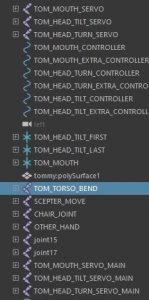
5. TOM SCEPTER MOVE:-
- For animating the scepter move function for 3D model of Tom use the joint SCEPTRE_MOVE(marked in the image below) for a range from -15 degrees to +15 degrees in the Y-axis.
- Since the joint chain for the scepter has not more than 3 joints therefore the data from the joint can be directly used for conversion with the 3D converter.
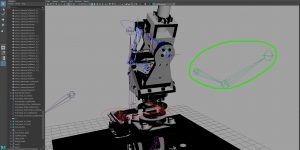
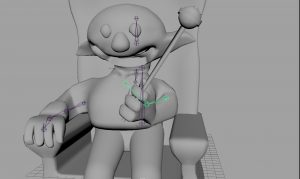
NOTE : To get a more clear understanding please refer to the link below for a video explaining more about rigging and joints: